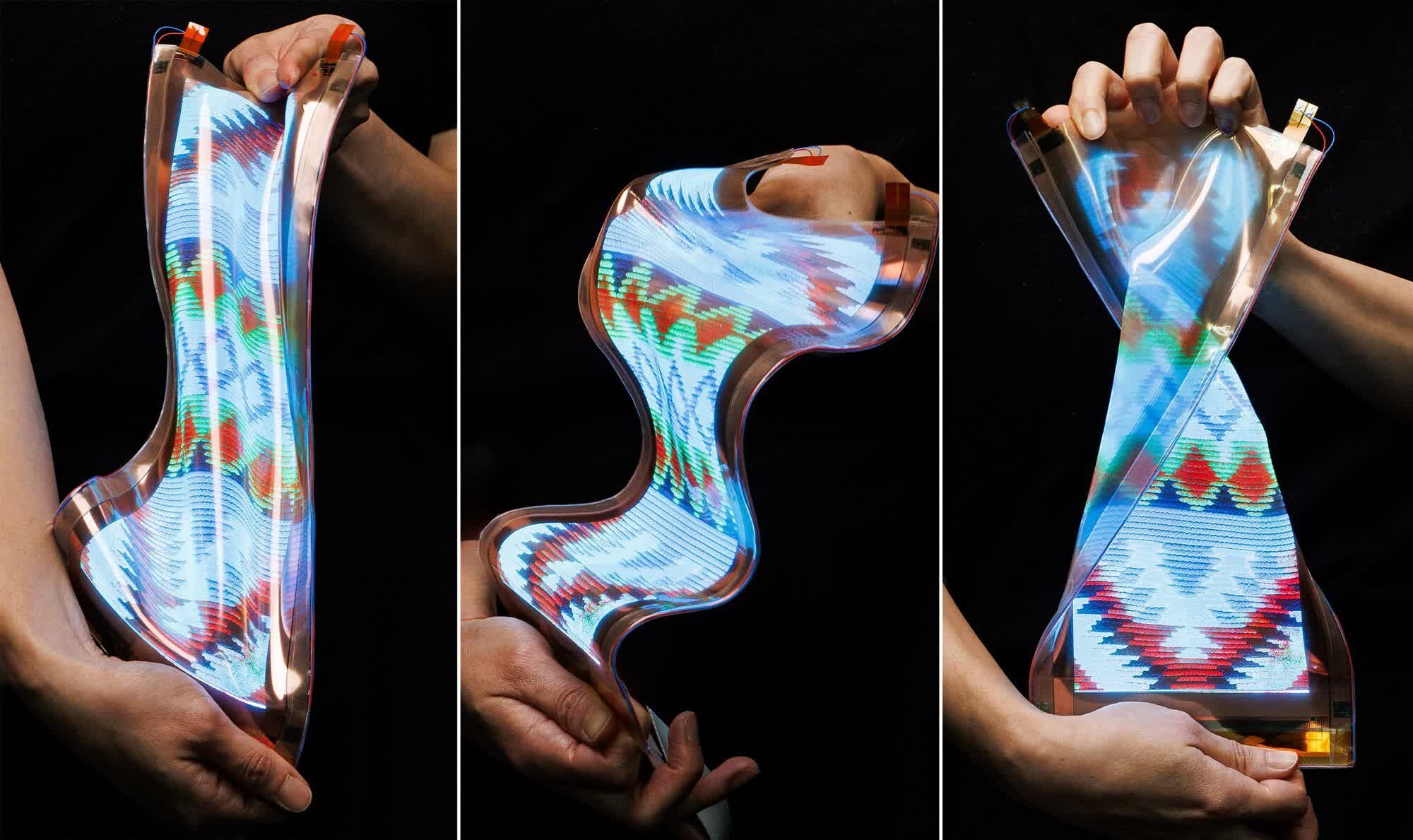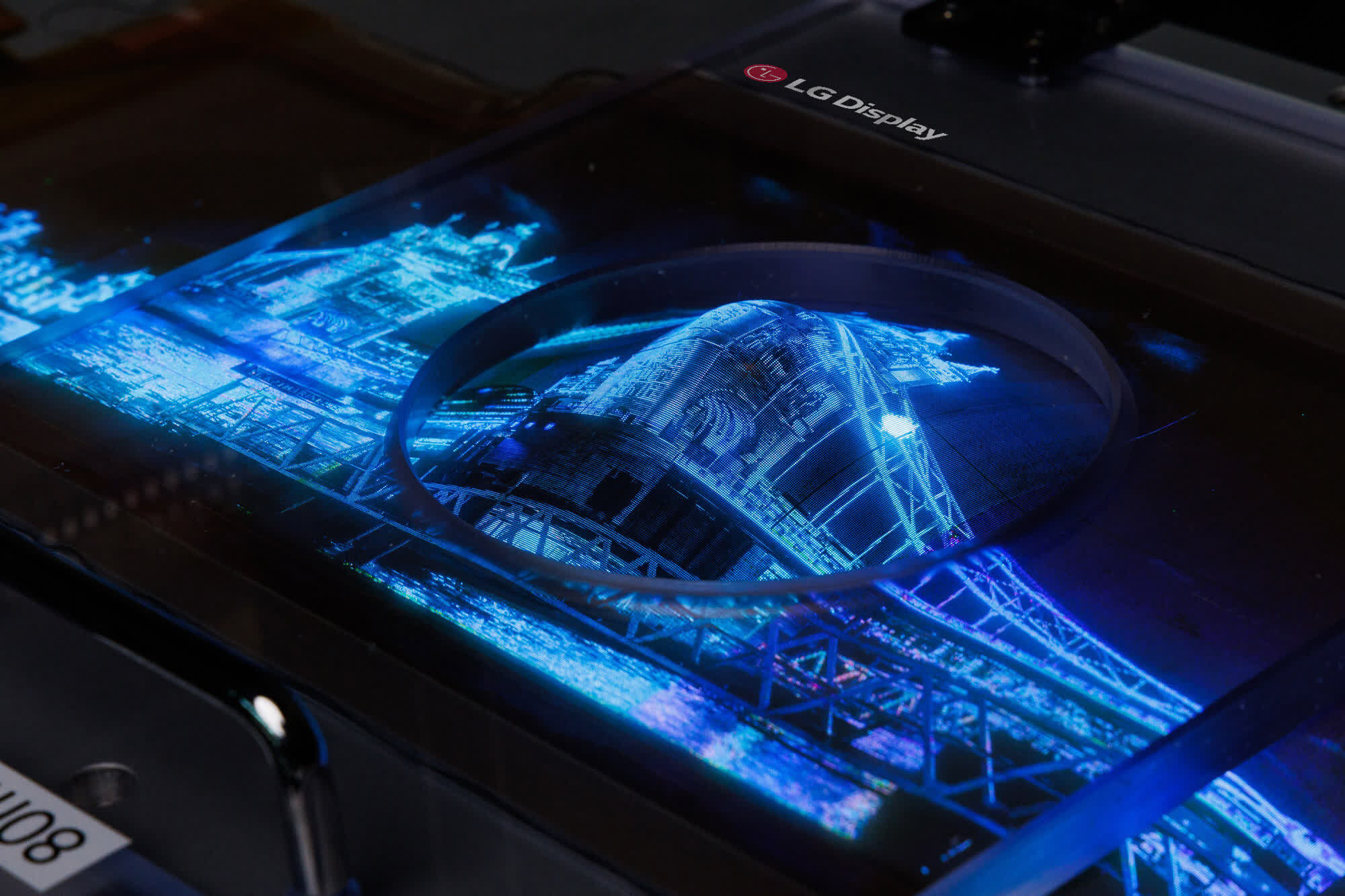What just happened? Super-stretchable, highly pliable screens are one of those technologies we often see in sci-fi movies and shows, but LG Display has just moved a step closer to making fantasy reality. The company has unveiled the world's first stretchable display capable of expanding up to 50%, the highest rate of elongation in the industry.
At LG Science Park on November 8, the display division of the Korean tech giant demonstrated its ultra flexible display in front of more than 100 people from the country's industry, academia, and research stakeholders involved in a national stretchable display project.
LG Display released its original stretchable display prototype in 2022, which could be stretched to more than 20% of its size.
The latest version has more than doubled the elongation rate to 50%: the 12-inch screen can stretch to 18 inches. It does this while simultaneously delivering a resolution of 100 PPI and full RGB color.
LG Display says it increased the original screen's flexibility and stretchability by introducing new technologies, improving the properties of a special silicon material substrate used in contact lenses and developing a new wiring design structure.
The new prototype also uses a micro-LED light source of up to 40μm to increase the screen's durability. LG says this allows it to be stretched over 10,000 times and maintain clear image quality, even in extreme environments such as exposure to low or high temperatures and external shocks.
But what are the practical applications for stretchable screens? Flexible, rollable phones are the first thing that comes to mind, though the current prototype's 100 PPI is much lower than the average handset's 300 PPI. The highest, the Sony Xperia 1 IV, has a 643 PPI.
LG says that stretchable displays are not only thin and lightweight but also capable of adhering to irregularly curved surfaces like clothing and skin. This means they could be suited for industries such as fashion, wearables, and mobility. Some of the application concepts it showed off included an automotive panel that stretches out into a convex shape and can be operated by hand, along with a wearable display attached to firefighters' uniforms that provides real-time information.
Tech giants have been working on flexible displays for over a decade now. We heard in 2021 that Samsung is developing stretchable OLED displays for future wearables, and it was this June when an Apple patent titled "Stretchable Display" revealed Cupertino is also researching the technology, possibly for use in a watch device that wraps around the wearer's wrist.

